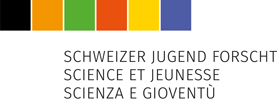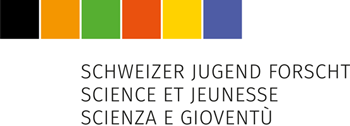Chemie | Biochemie | Medizin
Janis Stoffel, 1999 | Bottmingen, BL
The aim of the following paper was to investigate two different drug delivery systems using the same antibiotic, gentamicin, in terms of their release rates. The two systems were a hyaluronic acid-based hydrogel (HApN) and a carboxymethyl cellulose (CMC) based gel. The concentration of gentamicin released from the two systems was measured over course of seven days and under in vitro conditions. For the HApN, the results showed a burst release of gentamicin within three hours followed by a rapid drop at six hours. Thereafter the release continuously declined over the next three days reaching concentrations close to zero. The CMC on the other hand showed a more constant release over the whole study period of seven days with a peak after 48 hours. For both systems the total amount of released gentamicin was 19 % and 29 % lower than the control run without a gel for the HApN and CMC respectively, showing that the release would continue on for more than 7 days. Based on the resulting curve, the CMC would be the more attractive gel as a prophylactic tool while the HApN could establish high concentrations of gentamicin in a short amount of time to eradicate existing infections in revision cases.
Fragestellung
1. How is an antibiotic release study conducted and analysed?
2. What can I personally learn from such a practical experience?
Methodik
The aim of the release study was to see how the HApN and CMC behave with gentamicin sulphate, as in how much and how quickly the gentamicin is released out of the two gels and the PBS. This was done by placing the samples in selective dialysis tubes through which the gentamicin could diffuse. These dialysis tubes were then suspended in a NaCl solution, which was designed to replicate the blood serum. Samples were taken from the tubes at specific time points (0h, 3h, 6h, 24h, 48h, 72h, 120h, 144h) and stored at -20° C. Using a spectrophotometer, I was able to analyse the amount of gentamicin in the NaCl solution at the respective time points and then draw conclusions.
I was also able to use a complex rheometer to determine the viscosity of the HApN at various temperatures between 20 and 40° C.
Ergebnisse
For the HApN, the results showed a burst release of gentamicin within three hours followed by a rapid drop at six hours. Thereafter the release continuously declined over the next three days reaching concentrations close to zero. The CMC on the other hand showed a more constant release over the whole study period of seven days with a peak after 48 hours. Contrary to the gels, the control run without a delivery system showed a maximum peak after three hours only to drop close to zero after 6 hours. For both systems the total amount of released gentamicin was 19 % and 29 % lower than the control run without a gel for the HApN and CMC respectively.
The rheometer results showed that the viscosity of the HApN steadily but slowly increases until about 27.4 °C. After that, the Loss and Storage moduli both increase drastically until about 29 °C after which the moduli flatten out before very minimally dropping at 37.5 °C.
Diskussion
Depending on the intended use, the HApN might be a superior solution for infected revision cases whereas the CMC seems to be superior for infection prophylaxis in primary surgery with implants. The HApN could additionally be a more attractive solution particularly due to its thermo responsive properties. The cost and complexity of manufacturing the two gels also must be considered when looking at mass production.
Schlussfolgerungen
In conclusion, the aim of the release study was to see how a CMC based gel and a hyaluronic based hydrogel with gentamicin sulphate behave in terms of their rate of release. The HApN gel showed an immediate burst release with an exponential decline in the rate of release while the CMC showed a more constant, linear curve. For this reason, the CMC would be the more attractive gel as a prophylactic tool while the HApN could establish high concentrations of gentamicin in a short amount of time to eradicate existing infections in revision cases.
The applied method was successful and done under scientific conditions. The experiment can easily be repeated and could very well be the basis for further testing with more samples and particularly over a longer time period. Both gels have a lot of potential and are currently still being developed by the research team at AO Davos.
Würdigung durch den Experten
Dr. Christian Röhrig
Herr Janis Stoffel führte an der AO Davos Foundation Forschungsarbeiten zur Orthopädie auf hohem wissenschaftlichen Niveau durch. Während seiner Experimente, welche dem aktuellen Stand der Forschung entsprechen, befasste er sich mit der Einlagerung und Freisetzung eines Antibiotikums aus zwei neuartigen Hydrogelen. Die Unterschiede der Hydrogele wurden mit modernsten Methoden erfolgreich untersucht. Durch eine detaillierte und ordentliche Dokumentation, sowie eine reflektierte Einordnung der Ergebnisse, erstellte Janis eine verständliche und angenehm zu lesende Arbeit.
Prädikat:
gut
Gymnasium Oberwil
Lehrer: Rachid Flückiger



